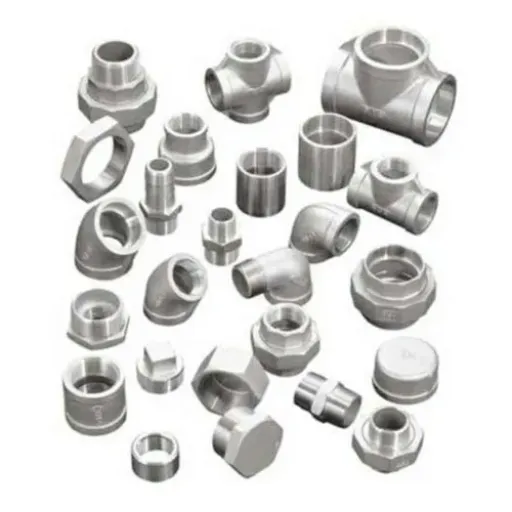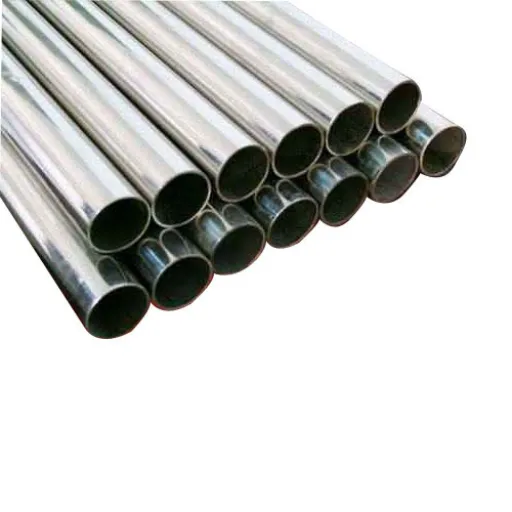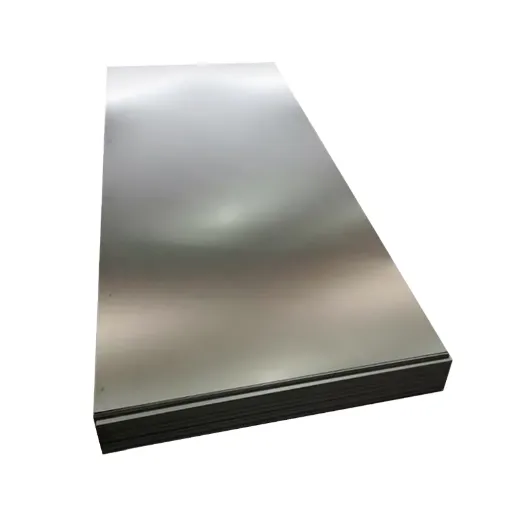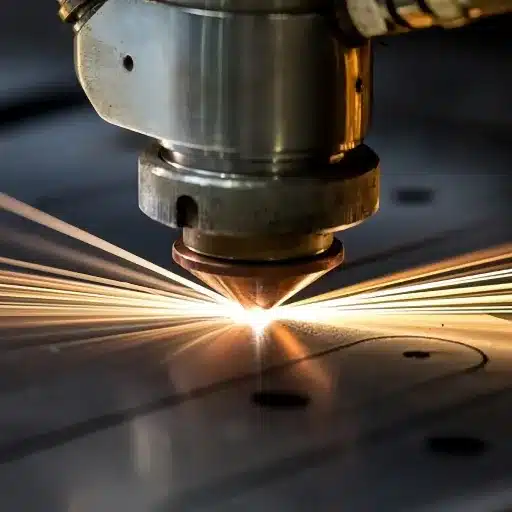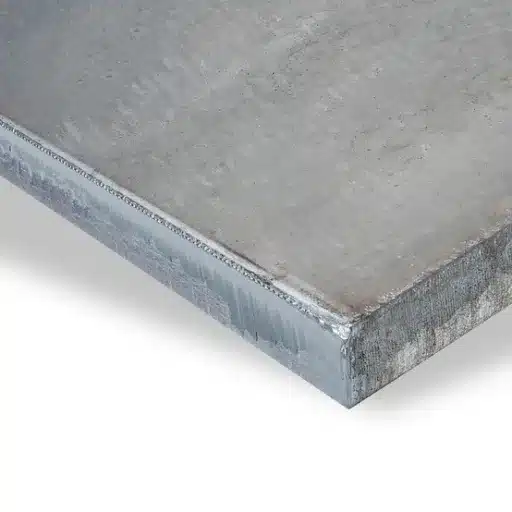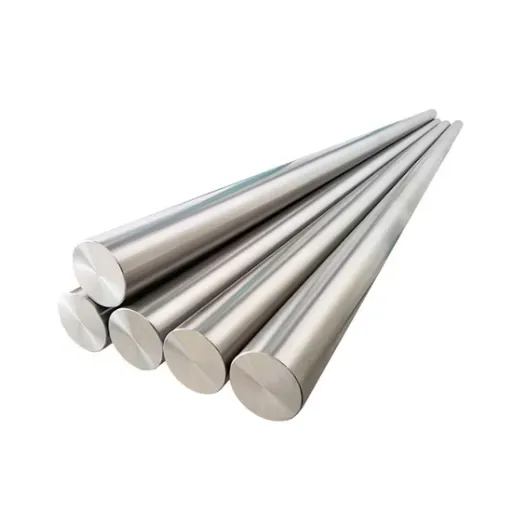Few substances are comparable to stainless steel when it comes to the ability to manufacture durable and versatile parts. In particular, forging stainless steel is considered a method that produces parts of extremely high strength and corrosion resistance for various industries, from aerospace to automotive. But really, what does the forging process involve, and how do manufacturers achieve such striking results? This article provides an insight into the thrilling world of stainless steel forging by examining the methods, advantages, and applications of this very ancient process. If you consider yourself an experienced engineer or just an admirer of metallurgy, this article will take you through the secrets behind one of the most trusted techniques for shaping this excellent material.
Introduction to Stainless Steel Forging
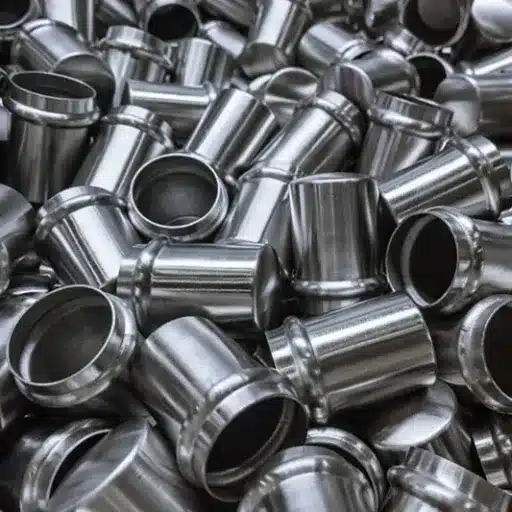
The forging of stainless steel consists of heating the material to an exact temperature at which it becomes malleable and then pressing it into the form desired. Manufacturers are said to accomplish wonders by controlling very carefully the temperature set of parameters, the force, and the cooling process so as to guarantee that the finished product is of superior strength, durability, and corrosion resistance.
Why Stainless Steel is a Crucial Factor in Manufacturing
Stainless steel holds a very crucial position in manufacturing owing to an unusual combination of strength, durability, and resistance to corrosion. This versatile material offers usage in many industries, including automotive, aerospace, construction, medical, and food processing industries. Stainless steel is considered special because of the presence of chromium, which forms a passive layer to shield the steel from rusting and staining.
On top of that, stainless steel is also a more environmentally conscious choice of engineering metals. It can be recycled nearly 100%, with over 50% of stainless steel products made from recycled metal. This consequently lessens the overall environmental impact, a value in line with present trends toward green production. Stainless steel, being durable and low maintenance, is thereby low cost in the long run for manufacturers. From operating instruments to skyscraper frameworks, stainless steel is trusted and versatile, making it indispensable in today’s manufacturing world.
Advantages of Stainless Steel for Forging
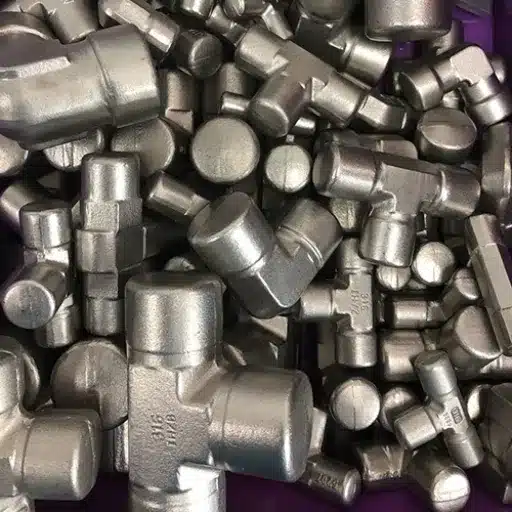
Taking advantage of forgings with stainless steel are corrosion resistance, durability, and strength. These steels perform well under hostile conditions, require low upkeeping, and have a very long service life. Thus, they are ideally suited for high-performance applications.
🛡️ Corrosion Resistance of Stainless Steels
One of the most profound advantages of using stainless steels for forging is that they offer a high level of corrosion resistance. This corrosion resistance comes about because stainless steel has at least 10.5% chromium, which absorbs oxygen to create a very thin yet very stable oxide film layer on its surface. This passive layer protects the material from corrosion attacks and can also repair itself when damaged, thereby allowing the product to withstand very distressing conditions.
In environments where moisture, chemicals, and salty conditions are present, stainless steels do a very good job. For instance, austenitic stainless steels-type grades 304 and 316-are considered the most popular grades used because of their resistance to various corrosive media. Grade 316 contains molybdenum, which imparts enhanced resistance to chloride attack in environments such as marine settings.
💰 Cost-Effectiveness in Manufacturing
Stainless steel is also credited with its cost-effectiveness in manufacturing, which makes it popular across many industries. In fact, its higher costs when it comes to purchase mean more money has been paid not for the material but for the lifetime benefits and utility. According to recent market studies, stainless steel components have the potential to cut downning maintenance and replacement cost of 30% during their lifecycle because of their long life and minimum degradation in harsh conditions.
♻️ Recycled Content
Of stainless steel made from reclaimed materials
📈 Cost Efficiency
Increase in production cost-efficiency in automotive
Moreover, the improvements in steel production technology have lowered the costs of stainless steel fabrication. For instance, advanced recycling procedures have facilitated the fabrication of over 70% of stainless steel from reclaimed materials, thus cutting down the cost and boosting sustainable practices. These are to say, lower tooling costs and lower energy consumption for machining have made that process far more efficient. A study done by the International Stainless Steel Forum (ISSF) reports that in sectors such as automotive manufacturing, an increase of 20% in production cost-efficiency is estimated through the application of stainless steel, thanks to its recyclability and lower product weight.
Understanding Forging
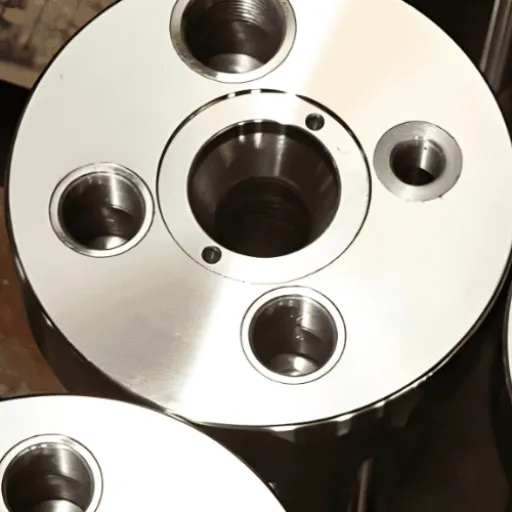
I understand that forging is the shaping process of metals with the application of compressive forces, typically hammering, pressing, or rolling. Thus, the process increases the metal’s strength and durability by refining its grain structure, making it the very choice of materials used in the industry that demands high-performance materials.
🔥 Heat Treatment Techniques in Forging
1️⃣ Annealing
Annealing is a heat treatment in which the metal is heated to a suitable temperature and then slowly cooled down to lose its hardness and internal stresses. It softens the material and makes it more malleable and ductile. Annealing improves machinability so that the part can be machined in the next step and is especially essential for components needing further processing.
2️⃣ Quenching
Quenching means heating the metal and then cooling it rapidly by immersing the metal in water, oil, or any other liquid. This hardens the metal and imparts it strength and resistance to wear. Yet quenching makes the metal brittle, so it is mostly accompanied by tempering to achieve a compromise between hardness and toughness.
3️⃣ Tempering
Tempering is the process of making the metal less brittle and more tough after it had been hardened and quenched. The procedure consists of reheating the metal to be under the critical point temperature and then cooling it down, through controlled methods. A forged component will be that way: tougher and stronger.
4️⃣ Normalizing
It is also heating the metal above its temperature of recrystallization and then air cooling it. Thus, in this process, the grain structure is refined, and the mechanical properties are improved for a more uniform composition. An ideal case of normalizing would be for critical components where structural integrity must be enhanced.
⚡ Die Forging and Its Benefits
The first of these advantages pertaining to die forging is that die forging can produce parts having uniform mechanical properties. The controlled deformation, however, will refine the grain structure of the material, thereby making the components have increased strength and fatigue resistance and consequently more dependable.
💪 Strength Advantage
Recent industry sources assert that die-forged components are up to 30% stronger than those made by any other methods of metal forming, thus suitable for aerospace, automobile, and energy industries where strength is critical.
Another big plus is also cost-effectiveness when this process is put on large-scale production. Although a high initial investment might have to first be put into die design and manufacture, subsequently, the cost per unit drops steeply to the advantage of high-volume runs. Also, die forging becomes one of the precision-forming processes with little wastage of material, with production material utilization rates being typically greater than 80%.
Steel Grades and Their Applications
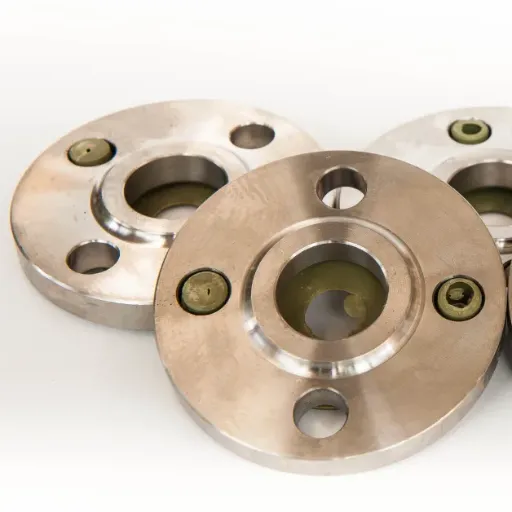
🔬 Different Types of Stainless Steel Used in Forging
Stainless steels are used in forging under the applications that require utmost strength and corrosion resistance. Depending on application requirements, the stainless steels used in forging are usually austenitic, martensitic, or duplex.
| Steel Type | Common Grades | Key Properties | Applications |
|---|---|---|---|
| Austenitic | 304, 316 | Excellent corrosion resistance, high-temperature strength | Chemical processing, marine, medical |
| Martensitic | 410, 420 | Higher hardness and strength, heat treatable | Knives, surgical instruments, wear components |
| Duplex | 2205, 2507 | Twice the strength of austenitic, excellent corrosion resistance | Oil & gas, petrochemical, power generation |
🔷 Austenitic Stainless Steel
Austenitic stainless steels, generally of types 304 and 316, are the most widely used forging stainless steels. These grades withstand corrosion very well and maintain their strength at high temperatures. By way of example, type 316 contains molybdenum, which increases resistance to chloride ions and in aggressive environments; hence, it finds usage in chemical processing, marine, and medical applications.
🔸 Martensitic Stainless Steel
Martensitic stainless steels, like the 410 and 420 stainless steels, generally have higher hardness and strength. The steels may be heat treated to improve mechanical properties so that the steels can be used in making knives, surgical instruments, and components that are subjected to wear.
🔶 Duplex Stainless Steel
Duplex stainless steels, such as 2205 and 2507, combine the properties of austenitic and ferritic steels. They provide nearly twice the strength of regular austenitic grades and have excellent corrosion resistance, particularly against stress corrosion cracking. These properties make them the steels of choice for use in aggressive applications in the oil and gas, petrochemical, and power generation industries.
Industry-Wise Applications of Stainless Steel Forgings
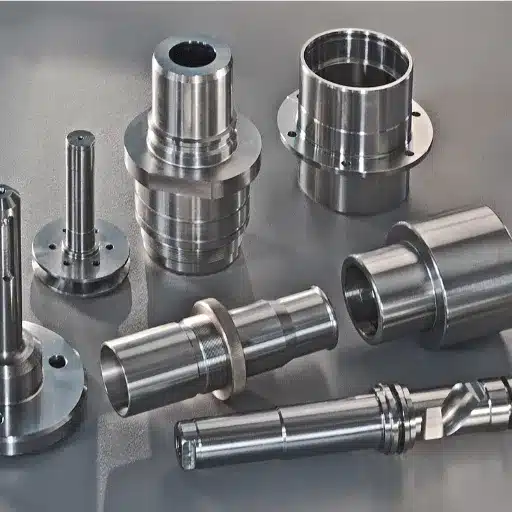
Stainless steel forgings are used in various fields in view of their application-based peculiarities. For instance, in oil and gas, they serve in valves and fittings so as to provide strength and corrosion resistance. In the petrochemical field, they have to deal with aggressive chemicals, whereas, in power generation, the forgings find application for turbine and shaft for consideration of their properties.
✈️ Aerospace and Automotive Industries
✈️ Aerospace Industry
The aerospace industry uses stainless steel forgings for components that have to withstand extreme conditions of high temperature and stress. The aircraft engine parts, landing gear components, and other structural parts are forged from stainless steel grades like 17-4 PH and 15-5 PH for their excellent mechanical properties and corrosion resistance.
📊 Market Data
- Market size: $4.3 billion in 2022
- Growth rate: CAGR of 5.6% through 2030
- Key drivers: Demand for lightweight and high-strength materials
Stainless steel renders a high degree of precision and reliability, thereby making it indispensable in safety-critical systems in both commercial and military aviation.
🚗 Automotive Industry
The automotive industry is increasingly using stainless steel forgings for the manufacture of such parts as transmission shafts, gears, and suspension. Grades 304 and 316 of stainless steel are preferred on account of their durability, resistance to wear, and capability to withstand severe mechanical loading.
🔋 EV Trends
Stainless steel materials are further being developed to meet requirements as trends towards EVs and lightweight vehicle design gain momentum.
Market Projection: Global automotive forgings market expected to exceed $60 billion by 2028, with stainless steel commanding substantial share in EV powertrains and battery assemblies.
🏥 Medical and Food Processing Applications
🏥 Medical Applications
Stainless steel forgings are crucial in medical and food processing industries, as the best available durability, corrosion resistance, and ease of sterilization are needed. Surgical instruments, implants, and medical devices are made of stainless steel. Biocompatibility and the capability to endure repeated sterilization are indispensable in ensuring patient safety and minimizing infection risks.
🍽️ Food Processing
In food processing, on the other hand, stainless steel is indispensable for hygienic and food safety standards. Mixing tanks, conveyor systems, and food-grade pipes are normally stainless steel for being unharmed by harsh cleaning agents and extreme temperatures.
Reference Sources
-
Grand View Research
Title: Stainless Steel Forgings Market Size & Share Report, 2030
Key Insights: This report highlights the industries relying on stainless steel forgings, such as automotive, aerospace, construction, and energy, emphasizing their durability and precision.
Link: Grand View Research -
Global Growth Insights
Title: Stainless Steel Forgings Market Size, Trends & Outlook
Key Insights: Discusses the growth in demand for stainless steel forgings in sectors like automotive, aerospace, industrial, and construction, driven by precision engineering needs.
Link: Global Growth Insights -
IndustryARC
Title: Stainless Steel Forgings Market Share, Size and Industry
Key Insights: Provides data on market share and the role of stainless steel forgings in industries like oil & gas, showcasing their importance in harsh environments.
Link: IndustryARC
Frequently Asked Questions (FAQs)
❓ How does open die forging differ from closed die forging structures?
It shapes the metal between flat or contoured dies so that it is not enclosed completely. This process therefore provides some leeway in producing rather large forged parts. Conversely, a closed die forging uses dies that completely enclose the metal to allow rather complicated shapes coupled with tight tolerances. Both methods are available with forged stainless steel components, so the choice is governed by what the forging needs and specifications dictate.
❓ What kind of advantages do stainless steel forgings confer?
All the advantages that stainless steel forgings confer include corrosion resistance, strength and toughness, and continuous grain flow that improves the mechanical characteristics of the alloy. Due to their heat resistance and protective oxide layer, they are excellent for marine and chemical processing applications. Forged parts also typically provide the best impact resistance and the least likelihood of stress cracking when compared to cast or machined parts.
❓ What does the grain structure tell us about stainless steel forging?
The grain structure of the metal is paramount to determining the strength and toughness of forged stainless steel components. A continuous grain flow coming out of the correct forging operation works to improve mechanical properties like impact resistance and fatigue strength. This becomes very important in hostile applications where longevity and reliability are matters of concern.
❓ What is the forging temperature range for stainless steel?
🌡️ Temperature Range
2100°F to 2300°F (1150°C to 1260°C)
Depending on the alloy and the properties intended, forging typically takes place at about 2100°F to 2300°F (1150°C to 1260°C) for stainless steel. The higher forging temperature could give the steel the desired ductility but could adversely affect corrosion resistance if care is not taken. The knowledge of forging temperature allows one to obtain the required mechanical properties of the product and make sure the very integrity of the product is evident.
❓ What stainless steel grades are used for forging?
Various stainless steel grades forged include 304, 316, and also varieties in the 400 series.
- 304 stainless steel: Generally accepted for use due to its good corrosion resistance and formability
- 316 stainless steel: Offers very good resistance to pitting and crevice corrosion
- 400 series: Contains high carbon steel inclusions and generally offers higher strength and hardness to the detriment of corrosion resistance
🔧 Conclusion
Stainless steel forging represents a cornerstone technology in modern manufacturing, combining the exceptional properties of stainless steel with the strength-enhancing benefits of the forging process. From aerospace applications demanding the highest reliability to medical devices requiring perfect biocompatibility, forged stainless steel components continue to push the boundaries of what’s possible in materials engineering.

